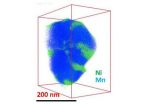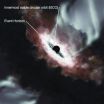(Press-News.org) Incarcerated patients with chronic hepatitis C virus (HCV) infection are just as likely to respond to treatment for the disease as patients in the community, according to findings published in the October issue of Hepatology, a peer-reviewed journal of the American Association for the Study of Liver Diseases. The study from the University of Wisconsin School of Medicine and Public Health (SMPH) in Madison found that HCV patients in prison were just as likely to achieve a sustained viral response (SVR) as non-incarcerated patients.
Medical evidence reports that chronic HCV is the leading cause of end-stage liver disease (ESLD) and liver disease mortality in the U.S. Further studies have shown the risk of developing cirrhosis due to chronic HCV ranges between 5 and 25 percent over a 25 to 30 year period. Consequences caused by chronic HCV are major public health concerns within the U.S. prison system, with research conducted by the Centers for Disease Control and Prevention (CDC) estimating up to 31 percent of U.S. inmates have chronic HCV, compared to just two percent of the general population in this country.
"Given that a history of intravenous drug use is more frequent among inmates, there is a higher prevalence of HCV infection in the prison population," explains lead author Dr. Michael Lucey, Chief of the Division of Gastroenterology and Hepatology at the SMPH. "HCV treatment during incarceration provides an opportunity to make a significant improvement to public health."
Incarcerated and non-incarcerated patients with HCV who were seen at the University of Wisconsin Hepatology or Infectious Diseases Clinic between January 2002 and December 2007, were evaluated for antiviral therapy. Researchers identified 521 general-population patients and 388 from the prison population who were evaluated for HCV therapy.
Results show that 61 percent of non-incarcerated and 60 percent of incarcerated patients received treatment with pegylated interferon and ribavirin. Those from the prison population were more likely to be African-American males with a history of alcohol or intravenous drug use. The team reported that SVR was achieved in 43 percent of prisoners compared to 38 percent of patients in the general-population group.
"Our findings highlight the effectiveness of antiviral therapy in HCV-infected prisoners, and show that it is as successful as treatment for HCV patients in the general population," concludes Dr. Lucey. "With previous studies citing poor results of HCV treatment in high-risk groups on an outpatient basis, a correctional setting may be an optimal setting for treatment that will help curb the hepatitis C public health crisis."
###This research was funded by the American Cancer Society Research Scholar Grant, the National Institutes of Health (NIH) Clinical and Translational Science Award, and by the Clinical and Translational Science Award (CTSA) program of the National Center for Research Resources at NIH.
This study is published in Hepatology. Media wishing to receive a PDF of this article may contact sciencenewsroom@wiley.com.
Full citation: "Comparison of Hepatitis C Virus Treatment Between Incarcerated and Community Patients." John P. Rice, David Burnett, Helena Tsotsis, Mary J. Lindstrom, Daniel D. Cornett, Patricia Voermans, Jill Sawyer, Rob Striker and Michael R. Lucey. Hepatology; (DOI: 10.1002/hep.25770; Print Issue Date: October, 2012.
URL: http://onlinelibrary.wiley.com/doi/10.1002/hep.25770/abstract.
Author Contact: To arrange an interview with Dr. Michael Lucey, please contact Mike Klawitter with University of Wisconsin Hospital and Clinics Public Affairs in Madison, WI at mklawitter@uwhealth.org or at +1 608-265-8199.
About the Journal
Hepatology is the premier publication in the field of liver disease, publishing original, peer-reviewed articles concerning all aspects of liver structure, function and disease. Each month, the distinguished Editorial Board monitors and selects only the best articles on subjects such as immunology, chronic hepatitis, viral hepatitis, cirrhosis, genetic and metabolic liver diseases and their complications, liver cancer, and drug metabolism. Hepatology is published on is published by Wiley on behalf of the American Association for the Study of Liver Diseases (AASLD). For more information, please visit http://wileyonlinelibrary.com/journal/hep.
About Wiley
Founded in 1807, John Wiley & Sons, Inc. has been a valued source of information and understanding for more than 200 years, helping people around the world meet their needs and fulfill their aspirations. Wiley and its acquired companies have published the works of more than 450 Nobel laureates in all categories: Literature, Economics, Physiology or Medicine, Physics, Chemistry, and Peace.
Wiley is a global provider of content and content-enabled workflow solutions in areas of scientific, technical, medical, and scholarly research; professional development; and education. Our core businesses produce scientific, technical, medical, and scholarly journals, reference works, books, database services, and advertising; professional books, subscription products, certification and training services and online applications; and education content and services including integrated online teaching and learning resources for undergraduate and graduate students and lifelong learners. Wiley's global headquarters are located in Hoboken, New Jersey, with operations in the U.S., Europe, Asia, Canada, and Australia. The Company's Web site can be accessed at http://www.wiley.com. The Company is listed on the New York Stock Exchange under the symbols JWa and JWb.
A new regulator for heart formation has been discovered by studying how embryonic stem cells adjust the packaging of their DNA. This approach to finding genetic regulators, the scientists say, may have the power to provide insight into the development of any tissue in the body – liver, brain, blood and so on.
A stem cell has the potential to become any type of cell. Once the choice is made, the cell and other stem cells committed to the same fate divide to form organ tissue.
A University of Washington-led research team was particularly interested in how stem cells ...
Alexandria, Va., USA – Today, the International and American Associations for Dental Research (IADR/AADR) published a study titled "Enhancing Oral Health via Sense of Coherence: a Cluster Randomized Trial." This study by lead author Orawan Nammontri, University of Sheffield, UK, is published in the IADR/AADR Journal of Dental Research.
Sense of coherence (SOC) has been related to oral health behaviors and oral health related quality of life (OHRQoL) in observational studies. This cluster randomized trial aimed to test the effect of an intervention to enhance SOC on OHRQoL ...
This press release is available in Spanish.A grass fed to cattle throughout much of the tropics may become a biofuel crop that helps the nation meet its future energy needs, according to a U.S. Department of Agriculture (USDA) scientist.
Napiergrass (Pennisetum purpureum) is fairly drought-tolerant, grows well on marginal lands, and filters nutrients out of runoff in riparian areas, according to William Anderson, a geneticist in the Agricultural Research Service (ARS) Crop Genetics and Breeding Research Unit in Tifton, Ga. ARS is USDA's principal intramural scientific ...
The deserts of Utah and Nevada have not always been dry. Between 14,000 and 20,000 years ago, when large ice caps covered Canada during the last glacial cooling, valleys throughout the desert southwest filled with water to become large lakes, scientists have long surmised. At their maximum size, the desert lakes covered about a quarter of both Nevada and Utah. Now a team led by a Texas A&M University researcher has found a new water cycle connection between the U.S. southwest and the tropics, and understanding the processes that have brought precipitation to the western ...
Using a continent-spanning telescope, an international team of astronomers has peered to the edge of a black hole at the center of a distant galaxy. For the first time, they have measured the black hole's "point of no return" - the closest distance that matter can approach before being irretrievably pulled into the black hole.
A black hole is a region in space where the pull of gravity is so strong that nothing, not even light, can escape. Its boundary is known as the event horizon.
"Once objects fall through the event horizon, they're lost forever," says lead author ...
Fishing hooks aren't the only hooks found in east-central Mexican waters.
A new species of freshwater fish described by a North Carolina State University researcher has several interesting – and perhaps cringe-inducing – characteristics, including a series of four hooks on the male genitalia.
Females of the new species – the llanos mosquitofish, or Gambusia quadruncus – also have distinguishing characteristics, including a colorful anal spot.
A paper describing the new species, which lives in a diversity hotspot and seemingly branched off from its closest relative ...
Studying leukemia in mice, researchers at Washington University School of Medicine in St. Louis have reduced a life-threatening complication of stem cell transplants, the only curative treatment when leukemia returns.
About 50 percent of leukemia patients who receive stem cells from another person develop graft-versus-host disease, a condition where donor immune cells attack the patient's own body. The main organs affected are the skin, liver and gut. Now, the scientists have shown they can redirect donor immune cells away from these vital organs. Steering immune cells ...
RICHLAND, Wash. -- Anyone who owns an electronic device knows that lithium ion batteries could work better and last longer. Now, scientists examining battery materials on the nano-scale reveal how nickel forms a physical barrier that impedes the shuttling of lithium ions in the electrode, reducing how fast the materials charge and discharge. Published last week in Nano Letters, the research also suggests a way to improve the materials.
The researchers, led by the Department of Energy's Pacific Northwest National Laboratory's Chongmin Wang, created high-resolution 3D ...
CAMBRIDGE, MA -- The point of no return: In astronomy, it's known as a black hole — a region in space where the pull of gravity is so strong that nothing, not even light, can escape. Black holes that can be billions of times more massive than our sun may reside at the heart of most galaxies. Such supermassive black holes are so powerful that activity at their boundaries can ripple throughout their host galaxies.
Now, an international team, led by researchers at MIT's Haystack Observatory, has for the first time measured the radius of a black hole at the center of a distant ...
A strange thing about black holes: they shine.
The current issue of Science Express features a paper by the Event Horizon telescope team – a collaboration that includes Avery Broderick, Associate Faculty at Perimeter Institute – that may shed light on the origin of the bright jets given off by some black holes. In a world first, the team has been able to look at a distant black hole and find out where its jets are launched from: the "launchpad".
Many galaxies, including our own Milky Way, have a huge black hole lurking at their cores. In about 10 percent of such galaxies, ...



